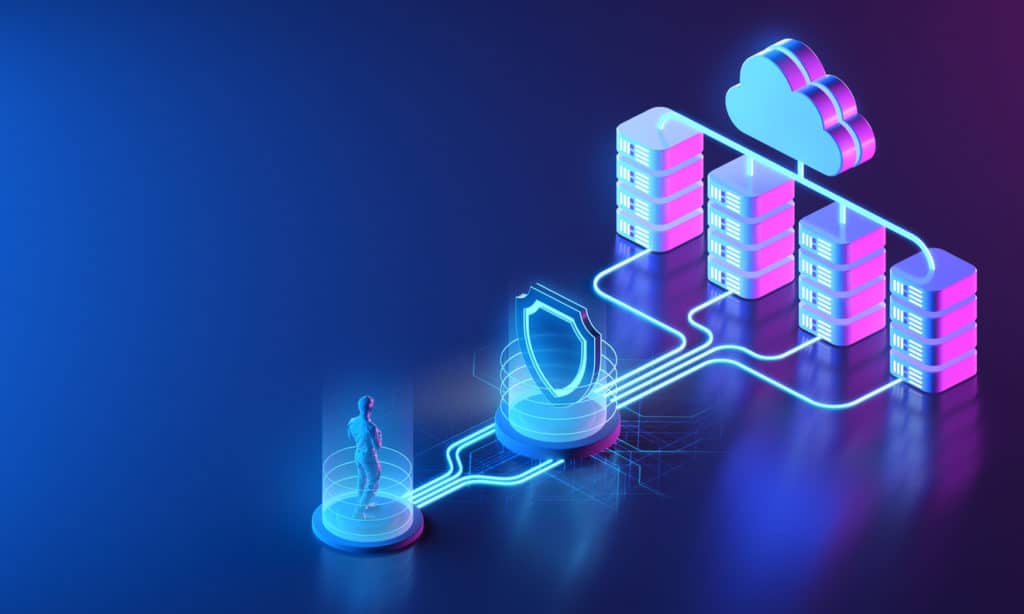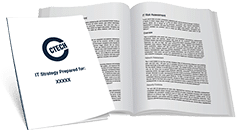Why Modern Security Is a Must
Technology, and the threats we deal with now, have changed dramatically since the 1990s. Using techniques developed then to protect yourself now is not safe. We live in a cyber-connected world, and there are many things you must do to protect yourself and your business. Traditional security no longer holds up, and everyone needs to move to modern security.
A handful of features can identify a traditionally secure environment. Typically, these businesses will have many servers in their building, and a trained IT staff will manage their technology. The employees work within the secured office space, and they gain access to what they need to work on externally through a VPN. A firewall protects their information, and they gain access with a username and password. These were common features in the 1990s, but they are fading out now and being replaced with more modern security.
Modern Security
An environment that is implementing modern security measures looks a bit different from a traditionally secure environment. Rather than having their servers entirely on-premise, many organizations will have a combination of some servers at their location and some servers in the cloud.
By employing the current security technology, staff can work securely anywhere and use any device to access their work. There is no additional hardware needed, and the security is responsive to today’s threats.
The Five Security Threats
There are five main security threats: Identity Threats, Device Threats, Application Threats, Email Threats, and Document Threats. An identity threat deals with ensuring the user is who they say they are. A device threat refers to anything that can compromise an employee’s workstation. An application threat references any application that has its own security and could be compromised.
Email threats are phishing attempts/ransomware, along with employees unintentionally sending important, private documents out of the business network. Finally, document threats refer to outside sources sending out your confidential documents once they leave your network.
Traditional Security and the Five Security Threats
When it comes to the five major security threats, traditional security does not handle them well at all. When reviewing the threats, CTECH determined that traditional security does not adequately address any of the dangers.
Identity Threats
It is not difficult for hackers to make their way into a business’s network in a traditionally secure environment. Typically, this type of environment has the following issues:
- Easily guessable or decodable usernames
- Weak usernames and passwords
- An inability to detect suspicious activity or suspicious locations
If it is too easy for someone to come in and pretend to be you, they will do it. This means they will then have access to anything on the network that the person had access to.
Device Threats
Traditionally secured systems also struggle with device threats. If someone loses their device, everything saved to that device is now potentially accessible to anyone who finds it. If the person who lost their device also has weak credentials, there is a higher chance the person will be able to get into it and steal confidential information. Another issue is that any devices being used at home are unmanaged and much more at risk of giving away personal information.
Application Threats
When you sign in to each application separately, you are more likely to write down your passwords somewhere, so you don’t forget them. Or, you will use the same password for everything. Either way, this makes it easy to hack into your applications.
Email Threats
In a traditionally secured environment, there are no alerts for ransomware or phishing attempts. This means that by the time it is discovered that something nefarious was going on, someone may have already exposed a lot of sensitive information. Also, this environment can not stop sensitive data from being shared.
Document Threats
In this environment, you can’t stop people from sharing your confidential documents once it leaves your network. There is also no protection against copying data. In addition, it allows anyone to print out data and share it with anyone. Finally, permissions only work internally, so anything that leaves your network isn’t protected.

Modern Security and the Five Security Threats
Modern security systems handle security threats much more efficiently.
Identity Threats
In a modern, secure network, users must log in with multi-factor authentication. This means that not only are they logging in on the device they are using, but their identity is also being checked by them having to check in on another device. It also allows users to reset their own passwords without needing help from someone else. Finally, it has AI Threat detection.
Device Threats
In a modern network, the IT department can control all mobile devices that are being used for the business. This means they can remotely wipe lost or stolen devices. They can also lock devices for the same reasons. It also enables them to encrypt your hard drive, which means if someone got your hard drive, they wouldn’t be able to access the information without a password.
Application Threats
In terms of applications, a modern network limits the ability to sign in to apps. It requires a single-sign-on which makes it easier to track who is accessing the apps.
Email Threats
Email is where a lot of things go wrong. In this type of environment, each email can be verified by the user’s security policies to ensure that they are allowed to send that email. Companies can also set email restrictions like “Do Not Forward” or “Encrypt Email.”
Document Threats
Documents are another area where people get in trouble. Now, when a document leaves the organization, it can call home to ensure that it is authorized to be opened by the person receiving it. Companies can also track sensitive documents and revoke or grant access to documents after they leave the organization.
Learn More About Modern Security Solutions
Protect your business and protect your sensitive documents. Don’t rely upon just a password to gain access to everything. CTECH is here to make your business better. Contact us today for more information on how we can help you.

My passion is to make my mark on the world in a positive and lasting way. I want to set an example for my son that his father can compete with integrity in today’s world, be very successful, and leave the world a better place for him.
Combining my technical/business-based education with a long career steadily progressing up the corporate ladder, I decided to build a company that held true to my values. So, I founded and designed the next generation of IT support firm: CTECH Consulting Group Inc. We are a completely automated, cloud-based IT company designed to compete against any other IT firm without the overhead. We promote a lifestyle to all our staff where they can work anywhere, at any time, access any information on any device that is relevant to their job, and collaborate with anyone they want to.

